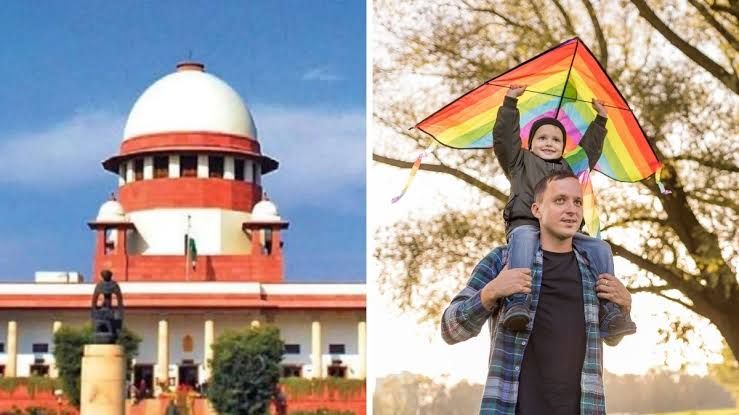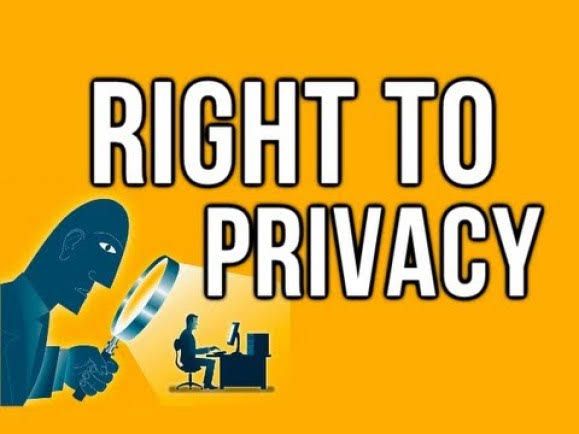Author: Shruti Mistry, a student at Amity University Chhattisgarh
On December 11, 2023, the Constitution Bench of the Hon’ble Supreme Court of India rendered its verdict, upholding the constitutional validity of Presidential Orders [C.O. 272] and [C.O. 273], issued on August 05 and 06, 2019, respectively, amending Article 367 of the Constitution and abolishing Articles 370 and 35A of the Indian Constitution. This significant ruling has far-reaching effects on India’s socio-economic and politico-legal landscape. While some laud the decision as a decisive blow to secessionist and separatist ideologies, others criticize it for being contrary to the federal nature of the Constitution’s Basic Structure. To comprehend the evolution of Article 370, it is essential to acknowledge the politico-legal developments that led to its inception.
Historical Significance: What Prompted its Emergence?
Following the finalization of the partition plan of the subcontinent, primarily based on religious identities, Hari Singh, the Hindu ruler of the Muslim-majority state of Kashmir, opted to sign a standstill agreement during the politically tumultuous period.
However, relentless guerrilla attacks by irregular militants from West Pakistan eventually compelled Maharaja Hari Singh to sign an Instrument of Accession, granting the Indian Parliament jurisdiction over three vital subjects: Foreign Affairs, Defense, and Communications.
Against this tumultuous backdrop, Article 370 was introduced when the Constitution of India took effect in 1950. This article stipulated that all provisions of the Indian Constitution, except for Article 1 and Article 370 itself, would not be applicable to the State of Jammu and Kashmir. Furthermore, any amendment or repeal of Article 370 required the consent of the Constituent Assembly of Jammu & Kashmir. Additionally, prior consultation with the State Government was mandated to apply any provision of the Indian Constitution to Jammu and Kashmir.
Subsequently, the first Presidential Order, known as the Constitution (Application to Jammu and Kashmir) Order, 1950, was enacted, delineating the subjects that would be applicable to the State of Jammu and Kashmir.
In 1954, a Presidential Order was issued to acknowledge the terms outlined in the Delhi Agreement signed in 1952, thereby introducing Article 35A to safeguard the territorial integrity of the State of Jammu and Kashmir. This provision granted special rights to the permanent residents of Jammu and Kashmir, following consultation with the Constituent Assembly of Jammu and Kashmir.
In 1956, the Constituent Assembly of Jammu and Kashmir was dissolved, leading to diverse interpretations of the provisions of Article 370 in various legal challenges over the past 70 years.
Legal Challenges Throughout the Years
The legal disputes regarding the applicability of Article 370 have been brought before the courts on numerous occasions. The first significant judgment on this matter was in the case of Prem Nath Kaul v. Union of India (AIR 1959 SC 749), where Article 370(3) was deliberated upon. The court examined the legislative authority of the former Maharaja in granting land to tenants. It was ruled in this case that all Presidential Orders extending to the State of Jammu and Kashmir require the approval of the Constituent Assembly. However, this ruling was limited to assessing the legislative authority behind the enactment of the Big Landed Estates Abolition Act, 1950.
The first direct interpretation of Article 370(1) occurred in the case of Puranlal Lakhanpal v. The President of India (1961 AIR 1519). In this case, a Presidential Order applied Article 81 of the Constitution, albeit with an amendment. The court ruled that Article 370 should be broadly interpreted and that the President possesses the authority to amend the Constitution in Jammu and Kashmir.
In the case of Sampat Prakash v. Union of India (1969 SCC (1) 562), the Hon’ble Court addressed the relationship between Article 370 and the Constituent Assembly of Jammu and Kashmir. The petitioners argued that the Presidential Order applying Article 35(c) was invalid in law because Article 370 ceased to exist following the dissolution of the Constituent Assembly. However, the Supreme Court ruled that Article 370 persists even after the dissolution of the Assembly.
In Maqbool Damnoo v. State of Jammu and Kashmir (1972 AIR 963), the Supreme Court clarified that the President possesses the authority to amend Article 367 of the Indian Constitution and modify the interpretative clause, even in the absence of the Constituent Assembly, which was not in existence at that time.
In State Bank of India v. Santosh Gupta (Civil Appeal Nos. 12237-12238_of 2016), it was established that the agreement or approval of the Constituent Assembly of Jammu and Kashmir was necessary for the annulment of Article 370. This case deliberated on the applicability of the Securitisation and Reconstruction of Financial Assets and Enforcement of Security Interest Act, 2002.
Abrogation and Subsequent Legal Challenges
After the political turmoil of 2018, with no single party holding a majority, Governor’s rule was enforced in Jammu and Kashmir in June 2018. Later, in December 2018, President’s rule was instituted, effectively supplanting the authority of the Legislative Assembly and Governor with that of the Union Parliament and the President.
On August 05, 2023, the President issued Order 272, revising the definition of ‘Constituent Assembly’ within Article 370(3) to ‘Legislative Assembly’. Subsequently, through Constitutional Order 273, and in the absence of a functioning legislative assembly, Parliament validated the abolition of Article 370, with the exception of Clause 1, which ensures the ongoing enforcement of the Constitution of India in the State of Jammu and Kashmir. This landmark development triggered a deluge of writ petitions against the Union government, flooding the Hon’ble Supreme Court. Recognizing the significance of the issue, on August 28, the Court deemed it necessary to refer the matter to a Constitution Bench for in-depth examination and deliberation.
Debated Arguments and a Conclusive Decision
The petitioners contended that the unique socio-political history of Jammu and Kashmir warranted special treatment for the state. Nevertheless, the Supreme Court firmly asserted that the state lacked any semblance of sovereignty and only maintained special autonomy. Consequently, the Supreme Court overturned the decision in Prem Nath Kaul to that extent.
Another pivotal question brought before the Hon’ble Supreme Court was whether Article 370 should be regarded as a temporary provision or if it had evolved into a permanent fixture. The petitioners argued that the retention of Article 370 after the dissolution of the Constituent Assembly implied its permanency. However, the Supreme Court held that the provision was originally intended to address specific historical circumstances. Moreover, ruling that the power under Article 370(3) could not be exercised post the Constituent Assembly’s dissolution would hinder integration, contrary to the provision’s intended purpose.
Therefore, the President retained the authority to exercise power even after the dissolution of the Constituent Assembly “to align with the objective of fully integrating the State”.
The petitioners additionally argued that the imposition of Article 356 would only permit the transfer of legislative powers, not constitutive powers, to Parliament. However, the Court held that there is no such differentiation within the scope of Article 356.
However, the Supreme Court declared C.O. 272 unconstitutional to the extent that it replaced the phrase “Constituent Assembly” with “Legislative Assembly” through an amendment in Article 367, an interpretative clause. It was determined that any substantial and significant amendment could not be made without the consent of the State Assembly, as it was deemed crucial under Article 370(1)(d). Nevertheless, since the outcome of C.O. 272 was the abrogation of Article 370 and the application of the entire Constitution of India, this fell within the powers vested in the President of India.
Future Prospects
The abrogation has significant implications as it extends the entirety of the Indian Constitution to Jammu and Kashmir, aligning it with other states and union territories. This ruling carries profound ramifications for the concept of federalism in India.
The Supreme Court has deemed the abrogation constitutionally valid on procedural grounds, yet substantive questions regarding the federal structure and the restoration of Statehood remain unresolved. Expressing concern, the Court has instructed the authorities to hold elections before September 30, 2024, and accelerate the process of reinstating Statehood for Jammu and Kashmir.
Drawing parallels with post-apartheid South Africa, Justice Kaul recommended for the establishment of a “Truth and Reconciliation Commission” to uphold the rule of law, alleviate distrust among the youth, and recognize a responsibility to provide reparations for human rights violations.
As we resolve the legal complexities surrounding Article 370, it becomes paramount to prioritize economic development, enhance educational opportunities, and promote cultural exchange. Through our combined endeavours and a steadfast dedication to integrity and unity, we can address historical grievances, foster trust, and chart a path towards a future where the people of Jammu and Kashmir epitomize harmony, coexistence, and mutual prosperity.



